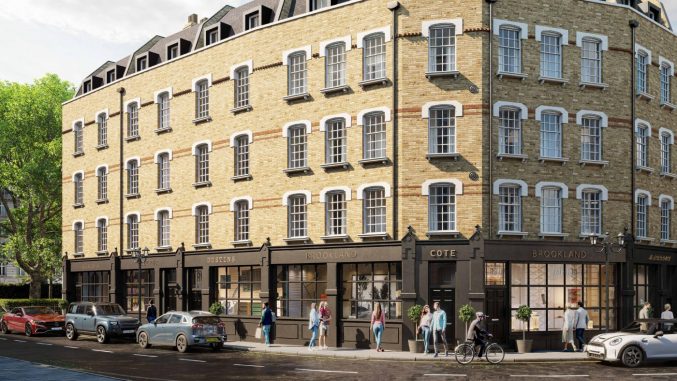Busy now, bumps ahead: bridging as Covid bounce wanes
By Laura Miller

Stressed and beaded by sweat at more than the nation’s heatwave, lenders and lawyers will nevertheless tell you, if not quite putting it like this, bridging lending has had a good Covid crisis.
What everyone is waiting to see is if this stamp duty holiday fuelled bonanza will continue now the government leg up has gone.
Bridging loan lending is up by more than a quarter when compared to before the pandemic, according to research by Revolution brokers in July.
Figures, pulled together from the Bridging Trends report, Homeowners Alliance, and Which? show in the first quarter of 2022, loans totalled £156.8m. The same quarter in 2020 UK bridging lending was £122.9m.
The sector is managing an increase of 28% since Covid 19 entered the world’s lexicon. Inbetween those two dates quarterly totals plummeted to as low as £79.4m in Q2 2020 before the stamp duty holiday kicked in.
Just as bridging professionals could not have predicted this explosion it is uncertain what to forecast about its continuation. Avi Barr, partner at BBS Law, says there is “no doubt” the stamp duty holiday created an “artificial increase” in conveyancing work at his firm and many others.
However, he adds: “Volumes are still really healthy, at the moment.” For Lucy Barrett, managing director at Vantage Finance,“the underlying demand remains and has been consistent for some time”. She adds: “Confidence seems to remain high despite the wider macro economic concerns, and business has been strong.”
Annual house price growth seems supportive for now, depending on which index you read. July saw the twelfth successive monthly increase, according to Nationwide, with annual UK house price growth at 11%, up from 10.7% in June, and 0.1% higher month-on-month after taking account of seasonal effects.
Robert Gardner, Nationwide’s chief economist, found the momentum “surprising”. He expects the market to “slow as pressure on household budgets intensifies”, with inflation set to reach double digits, and the Bank of England raising rates, most recently in August to 1.75%, with further rises predicted.
Iain McKenzie, CEO of The Guild of Property Professionals, described house prices as continuing “to defy gravity”, ominous for an unnaturally high market that is, he noted, starting to level out.
“Over the past month the number of buyer enquiries has started to subside, and we are seeing a more balanced sales market that could mean we will see house price growth cool,” he said at the start of August.
Predicting property price crashes is a fool’s errand – though a rival index from Halifax puts prices down 0.1% month on month for July, the first decrease since June last year. Market stagnation could see demand for bridging falter.
In the immediate term sits a backlog of cases seeking completion. Anecdotally even a fairly simple remortgage is taking more than three months to process. Bad news for buyers and sellers, but potentially good news for bridging lending.
Vantage’s Barrett is on the sharp end. “Unfortunately the delays in the process of acquiring property feel at an all time high,” she says, “the number of people losing buyers due to this is definitely creating a raft of chain break bridging customers, those desperate not to lose out on their property purchases.”
Barrett reckons the market is restricted in general by poor service and lack of capacity across various ancillary services that are necessary to keep the market moving. She adds: “Bridging finance does and always has proven to be a good channel to make things happen when longer term funding solutions are not likely to work in time.”
As a conveyance lawyer, Barr is quick to defend his profession. He says: “I do wonder if various stakeholders are driving a “conveyancing backlog” agenda. We simply are not seeing it.” Instead Barr blames sellers with “often unrealistic expectations on timescales”.
Bridging is playing a crucial role for investors at the moment, he says, because of the speedy availability of funds. This in turn is “allowing buyers greater leverage when negotiating prices whilst also ensuring expectations on speed can be met”, he says.
Bridging loans are in demand for projects where there is an element of adding value, he adds, like refurbishment or development. Barr says: “The lenders we are working with are offering a really attainable set of products for these sorts of investments, at attractive loan to value ratios.”
While the Revolution figures show bridging lending is markedly higher than pre-pandemic, applications and completions in Q1 2022 have fallen back from their record highs in Q4 2021, according to the latest data from the Association of Short Term Lenders (ASTL). Bridging completions were £1.04bn in the quarter ending March 2022, a fall of 15.8% on the previous quarter, though this is still high by long term averages.
Barr, whose work is in the investment market, is not foreseeing a slow down in the next 12 months. He says: “The challenges that are clearly going to be affecting the economy create new opportunities particularly for investors and lenders who are prepared for the downturn.”
Many of Barr’s clients share an expectation that a downtown could give back some real value into what many currently feel is the peak of the residential market. He says given the relatively easy access to bridging finance, he is seeing clients “venturing out of their traditional comfort zones” into newer areas of investment and development.
“We are seeing office to residential conversions, given the new impetus by office users vacating with a greater emphasis on work from home, and airspace developments and HMO market continue to grow”, he says.
Vantage Finance’s Barrett also sees the rest of 2022 remaining busy, “based on the demand we are seeing and the sentiment in the market”, although as she points out, “there are a number of factors at play which suggest a slow down could be coming beyond that”. She is, of course, referring to rising interest rates and rampant inflation. She says: “Unless both these things settle down the property market will not be able to keep moving at the same pace to sustain this”.

Laura Miller is a freelance journalist who writes about money and business. She regularly appears in UK national and trade newspapers and magazines, and has previously worked for ITV News and the Telegraph among others. Find her on twitter @thatlaurawrites










You must be logged in to post a comment.